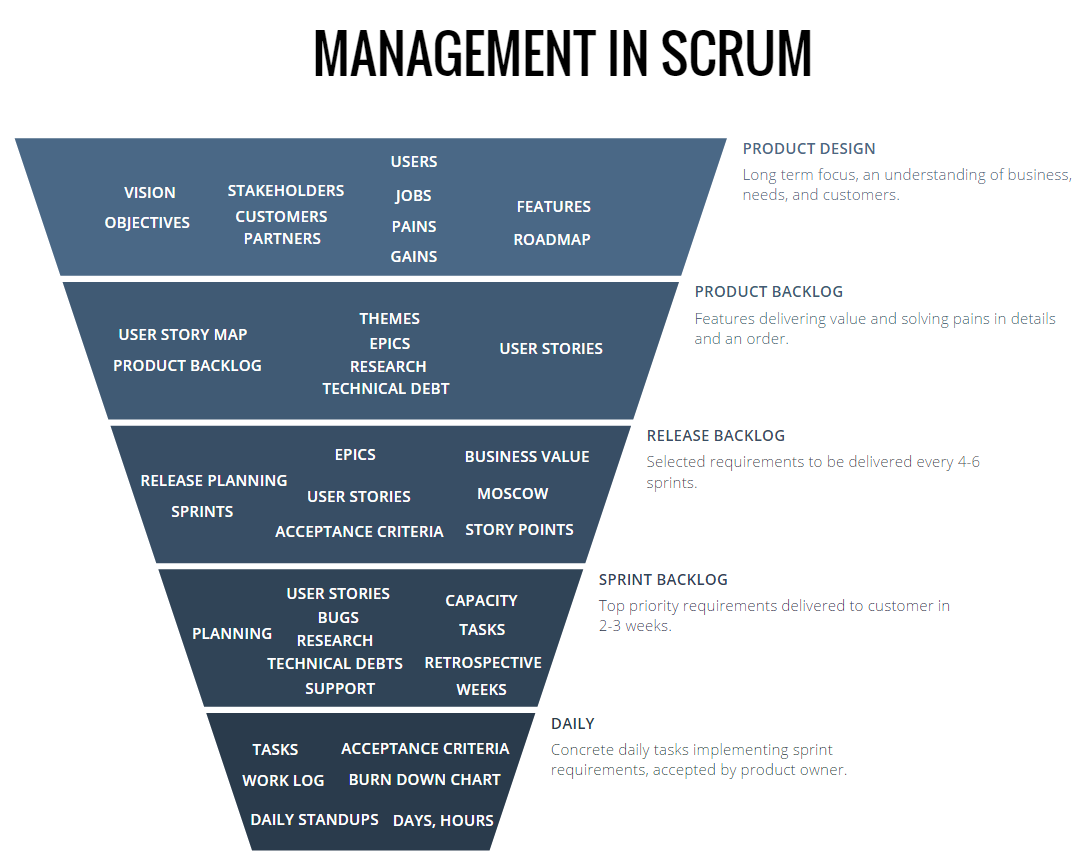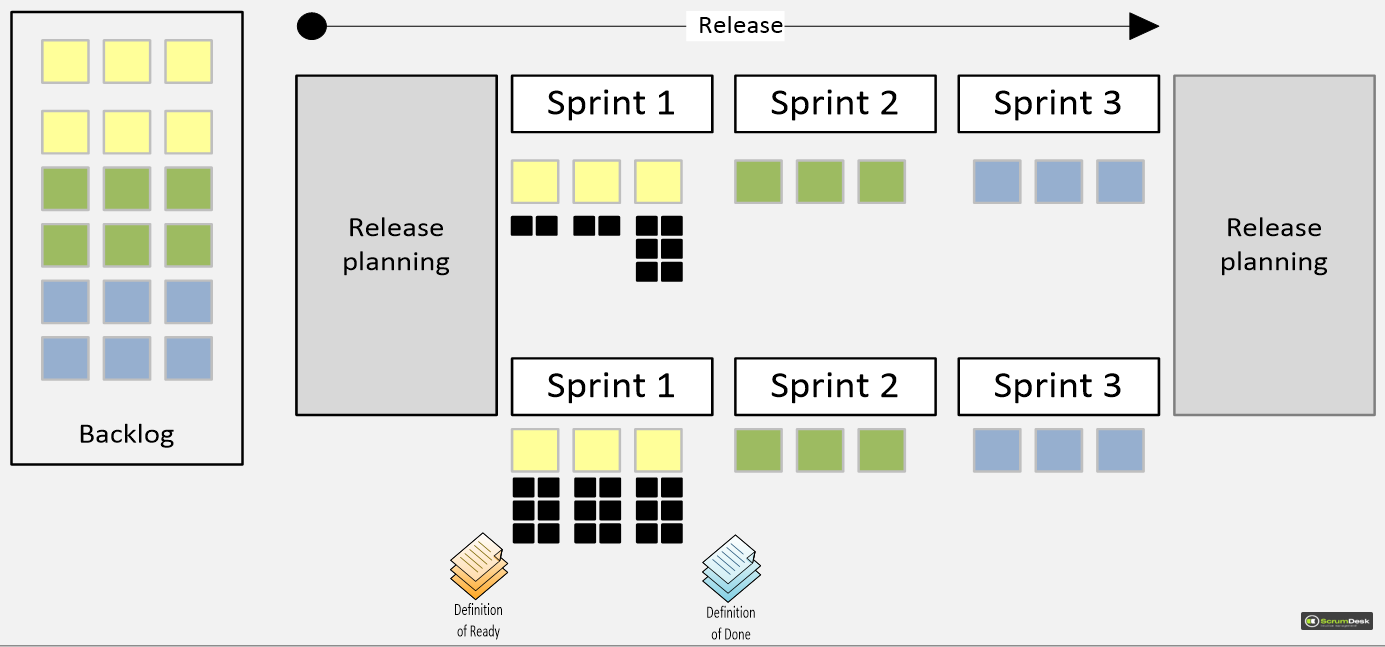Product Management in Scrum
Agile delivers value to customers regularly and often. To manage such fast development cycle it is suggested to focus not just on a tactical level, but strategical as well.
Therefore there are more levels of management in Scrum. While the product owner concentrates more from the top to the bottom, the team focuses in opposite direction.

As value should be delivered regularly, there are more cycles (iterations) in agile development. Agile product management works on multiple levels of product planning at the same time.
Vision & strategy
The first level is about the vision. The product is specified often with help of an elevator statement that describes who the product is, what the product is, who is a competitor, what kind of problem it solves. Later this sentence is detailed with help of a business model canvas or lean canvas. Customer segments are described with Value proposition canvases, customer journey, personas, or empathy maps. Only then the product manager or product owner starts to work on the product backlog.
Product Backlog
Product refinement/grooming is done typically multiple times per year. The product backlog is managed with help of a user stories map or a linear list. Every requirement is written in a special “User Story” format describing more who needs it, why is that feature needed, and what it should do. Additional details like acceptance criteria, UI design, UX are added later in preplanning or planning sessions.
Release and sprint planning
From the backlog are requirements slotted into versions (releases) which are split into multiple sprints. There is also a difference in the level of details. Most details are in the sprint and only 1 or 2 sprints are detailed because of expected changes based on business needs. The length of the sprint is the same. Also, the duration between the versions (releases) should be the same.

